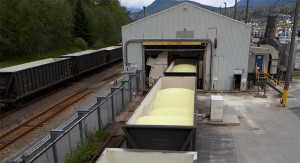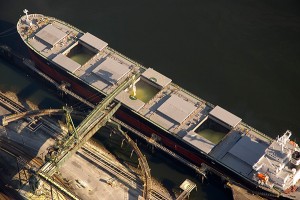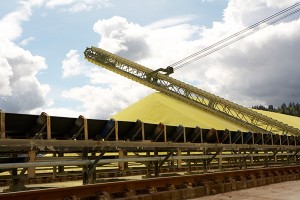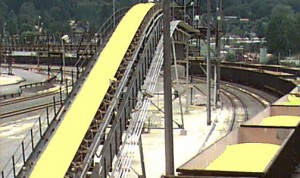Sulphur, one of the most essential raw materials on earth, begins its journey in Alberta. Derived from the oil and gas fields, it is hauled over the Rocky Mountains by Canadian National and Canadian Pacific Railways. In an average year, more than 36,000 railcars or 3.5 million tonnes of sulphur make their way to the port of Vancouver.
PCT relies on four highly specialized pieces of equipment to move sulphur through the terminal.
Rotary Car Dumper
The Rotary Car Dumper unloads sulphur from each railcar onto conveyor belts. Railcars are moved into the dumper—one at a time but still linked together—by an indexer arm. Each car is then rotated to empty its contents into receiving hoppers below. The dumper can unload up to 30 railcars or 3,000 tonnes in just one hour.
Stakrake
Standing tall in the middle of the sulphur piles is the 27-metre high Stakrake, which performs both storage and reclaim operations. Chain-driven paddles on twin booms extending 40 metres on either side of the Stakrake gently push the sulphur out onto the windrow piles for storage. By reversing the rotation of the chains, the sulphur is reclaimed onto a conveyor system for loading into ships.





